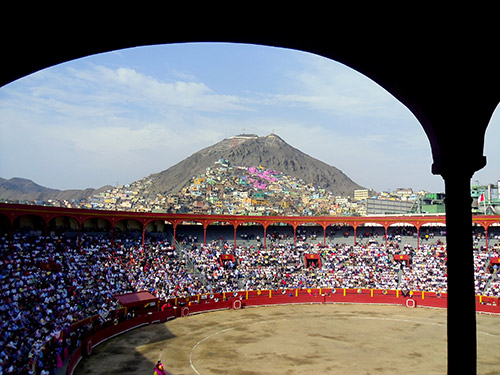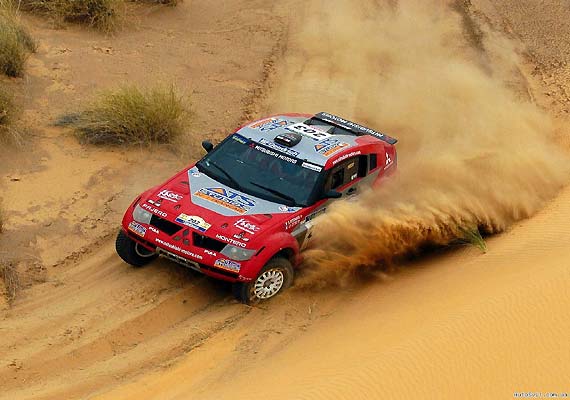ANNUAL LIMA EVENTS
During the year there are a number of traditional and modern events that are part of the social calendar of Lima.
Here are a few examples.
DAKAR RALLY- 5th January, 2013
In 2013 Peru hosted the world´s best known car rally, the Dakar Rally. The race included not just cars, but trucks, motorcycles and ATVs. The route traverses well known tourist areas such as the Nazca Lines, Paracas National Reserve and Arequipa. The deserts of the Peruvian coast have some of the deepest canyons in the world and are major challenges for drivers, and they will also need to travel through one of the deepest canyons of the world, the Cotahuasi. In addition, the deserts of Peru are considered more difficult than other areas of the world, and is a great tourist potential for this country.
For Peru, this major attraction generates a new venue for tourists to come and enjoy Peru.
LORD OF MIRACLES
In Peru, Jesus is venerated as “The Lord of Miracles" and during the month of October there are processions in celebration throughout the country. Depictions of Jesus, Mary and St. John are decorated in purple and carried through the streets. On the canvas , they illustrates Jesus crucified on the cross, with the Holy Spirit and the Father. Besides its beauty, the canvas is a wonderful representation of the truths of their faith.
Each year, the crowds of all social backgrounds celebrate together the procession of the Lord of Miracles, not only in Peru, but wherever there are Peruvian communities. The streets are colored in purple to celebrate the Lord who died on the cross for them and loved them. In the procession, Virgin Mary and St. John are joined together in deep gratitude and joy for the salvation of a new life given by Jesus. That is the greatest miracle.

FAIR BULLS
The Plaza de Toros de Acho, (Acho bull ring) located in the district of Rimac in Lima and is one of the oldest bull rings still in active use today, being third in seniority in the world, preceding it only to La Maestranza in Seville and Zaragoza, among which still remain valid and category. Since it's opening on January 30, 1766, Acho has been witness to the evolution of bullfighting, and its arena has hosted some of the greatest matadors in history.
The initiative was from Don Agustin de Landaburu, who got permission for construction from Viceroy Manuel de Amat y Juniet. The first bullfight held in the "Sign of the Beacon Square" as it was called then, was held on January 30, 1766, according to research by Dr. Aurelio Miro Quesada Sosa, a prominent Peruvian intellectual who was with the daily press.
The story also notes that the first bullfights were attended by the Viceroy Amat Juniet, and the celebration was conducted without the permission of King Carlos III of Spain, since it was still pending.
Today, over 13,000 spectators come from all over the country to witness this traditional sport.
In 1945, the square was remodeled reducing its ring´s diameter from 90 to 60 meters. This permitted the expansion of its capacity from 6300 to 13,700 spectators.

MISTURA
Celebrated in September of each year.
MISTURA food fair is the largest in Latin America and for Peruvians, it is also one of their greatest cultural festivals. It is a tasty and colorful ten days in which their tradition is celebrated to the beat of music and dancing from all over Peru.
Here we meet the diverse gastronomic chain of actors: farmers, cooks, bakers, food sellers, confectioners, waiters, restaurants, cooking schools, diners, among others, to pay tribute to the diversity of agriculture, food preparation and traditions, one of the world's richest.
From the ancient traditions of indigenous farmers who revere and protect Pachamama (Mother of Earth), and who, through the ages, have learned how to interpret our geographic and climatic environment to create a cuisine that is one of the most varied the world. MISTURA has a very important presence in Peru.
MISTURA has grown to be an expression of the people. All are welcome to this great celebration and especially to share the values that unite us: tolerance, commitment to the environment and social responsibility guidelines by which we seek that our cuisine is an engine of inclusive development, cultural identity and social integration
PURCHASE OF TICKETS
The city has a number of different cultural activities ranging from concerts to plays and to sports that give it an international character.
For more information visit: www.teleticket.com.pe



